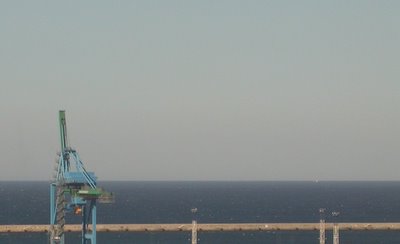Perimeter Displeasure
 4. Production in the discipline of architecture can be defined by recurring methods and techniques. What new methodologies become necessary in light of perimeter thinking? How do established modes of production get reorganized?
4. Production in the discipline of architecture can be defined by recurring methods and techniques. What new methodologies become necessary in light of perimeter thinking? How do established modes of production get reorganized?Perimeter thinking? It already sounds like we should be bracketing a new form of thought process specific to this theme, which would implicitly entail the generalized obsolescence of any ‘established modes of production’, if they are to be defined per subject matter/site of interest. A grammar of exceptions. You’re answering your own question..
I see among our studio themes the perimeter expressed as one of three possibilities: the edge of uncharted territory, be it geographical or knowledge based; the urban ready-made, the land of ultimate banality which we-architects are quick to aestheticize (one wonders: to whose benefit?); and the cracks and malfunctions within planned system, the anomalous zones that have been marginalized because our society likes to spotlight its failures about as much as its losers (ever noticed that in most other countries, defeated candidates get to come back and try again?). These categories widen the role of the architect to explorer, popular culture theorist and social worker, respectively, and whole new sets of methods and techniques become available.
In terms of architectural interventions, these specific perimeters all suffer from a lack of existing (or proven valid) methodological precedent. Architecture on virgin territory. So how do we lay an infrastructure of creative possibilities, without which any intervention, as good as it may be, could be erased without consequences to the land or to the people? Malcolm’s ‘art of composition’ is a possibility, if it speaks of tapping into existing harmonic needs other than formal (for now). It would demand extensive analysis (a scientific approach, watch out!) of programmatic needs. What is available, what is necessary, what is desired? What other desires and necessities would emerge as a consequence to any proposal? It’s a difficult exercise in proportioning. If many of these ‘perimeter conditions’ have not benefited from the touch of the ‘dream-maker’ architect, they certainly have already either been exploited or rejected as non-lucrative by the ‘money-maker’ economists. We’re always a bit behind on that one. Our role is to make spaces for local desire rather than for delocalized cash. Whether we are event-designers or space-manipulators, ultimately we’re trying to provide an optimized pleasure vs. displeasure ratio, and it should involve a clear, proportional and scaled definition of those affected. Sadly, pleasure is more easily evocated by a nebulous zone made of 100% potential than by any attempt post execution.
Is perimeter a sine qua non to pleasure?
0 Comments:
Post a Comment
<< Home